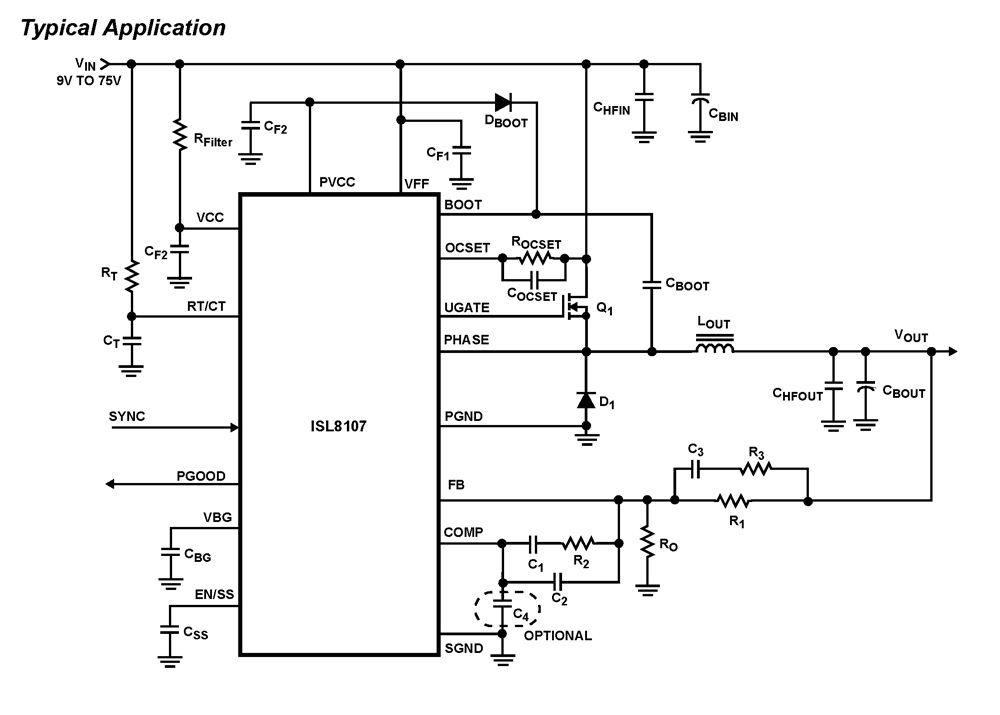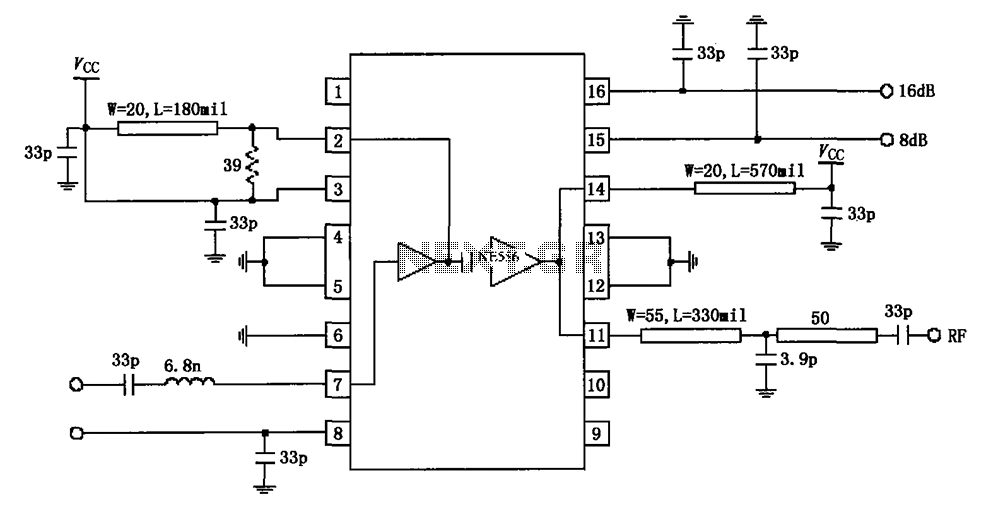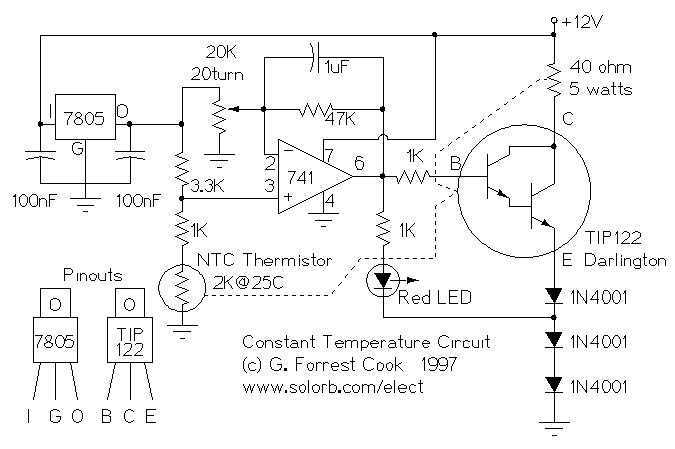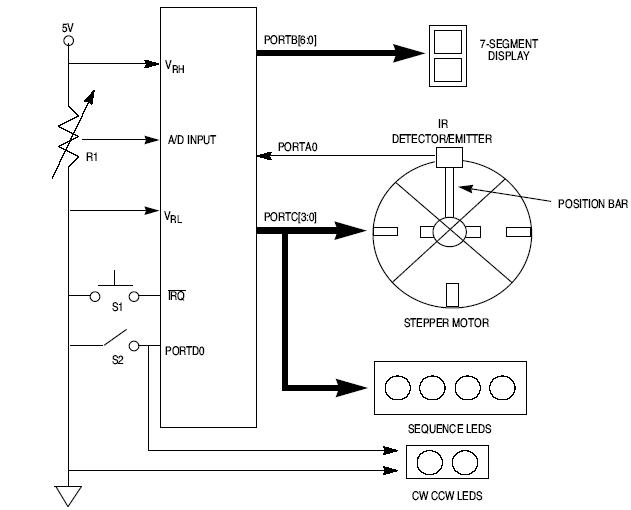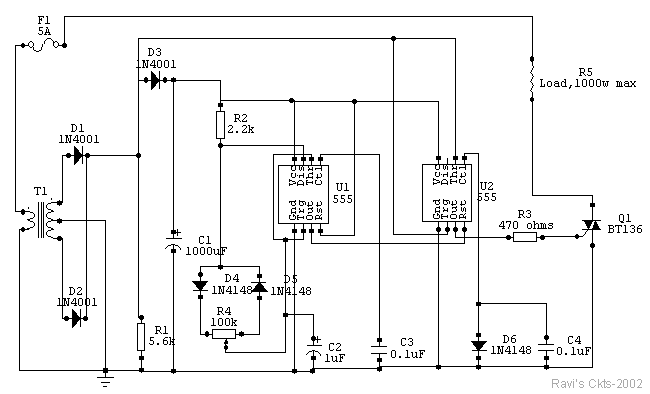
88 108 mhz pll controller for fm
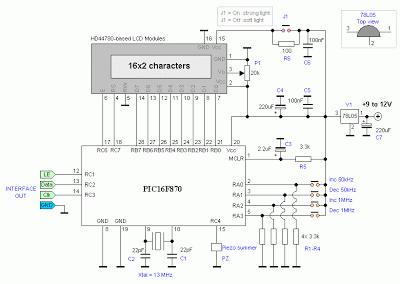
This circuit provides an explanation of the Phase-Locked Loop (PLL) controller unit for an FM transmitter. It is crucial for maintaining a digitally controlled and stable transmitter frequency. The core component of this unit is a PIC processor, specifically the PIC16F870, accompanied by a 2 x 16 character display and four buttons. When jumper J1 is disconnected, the LCD will exhibit a soft backlight due to reduced current passing through resistor R6. Conversely, when jumper J1 is connected, a stronger backlight will be activated. The components used in this circuit are not critical; the potentiometer (P1) can range from 1k to 22k, and resistors R1 through R5 can be adjusted between 1k and 10k. The orange squares in the schematic represent inputs from the buttons used to select frequencies, while the green squares indicate connections to the PLL at the Voltage-Controlled Oscillator (VCO). The display consists of two lines, each capable of showing 16 characters. The first line displays "FM Radio Station," while the second line shows the current frequency. Users can customize the text on the first line by pressing the Increment 50 kHz or Decrement 50 kHz buttons during power-up. Characters can be modified using the two buttons to navigate up or down. Upon selecting the desired character, pressing the Increment 1 MHz button advances to the next character. Once all 16 characters are entered, the unit restarts with the updated text.
The PLL controller unit is designed to ensure frequency stability in FM transmission by locking the output frequency to a reference frequency. The PIC16F870 microcontroller serves as the central processing unit, handling user input and controlling the display. The 2 x 16 character display provides user feedback, showing both the station name and the operating frequency, making it user-friendly.
The circuit includes buttons for frequency adjustment and character entry, enhancing user interaction. The soft and strong backlight options for the LCD cater to different user preferences and operational environments. The flexibility in component values, such as the potentiometer and resistors, allows for customization based on specific application requirements.
The PLL circuit utilizes the VCO to modulate the frequency based on the control voltage provided by the PIC microcontroller. This modulation ensures that the output frequency remains stable and accurate, which is essential for effective FM broadcasting.
Overall, this PLL controller unit represents a robust design for FM transmitters, combining ease of use with flexible configuration options, ensuring reliable performance in various operating conditions.This circuit will explain the PLL controller unit for the FM transmitter. It is very important since the transmitter frequency is digitally controlled and thereby very stable. The heart of this unit is a PIC processor called PIC16F870, a 2 x 16 char display and four buttons. If jumper J1 is disconnected the LCD will have soft backlight because a l ow current will pass through R6. If jumper J1 is connected you will have strong backlight. The component are not critial at all, the Pot (P1) can be from 1k-22k and (R1-R5) resistor can be changed to 1k-10k. The orange squars are the input from the buttons to select frequencies. The green squars are connection to the PLL at the VCO. The display has 2 lines with 16 Chars. The first line of the display show "FM Radio station", next line will show the frequency. If you want, you can write your own text on the first line. To modify the test, you press Inc 50 kHz button or Dec 50kHz button during power up. You can change the chars up/down with the two buttons. When you find thechar you like you press Inc 1Mhz button to go to next char. When all 16 Char is entered, the unit restart with the new text. 🔗 External reference
The PLL controller unit is designed to ensure frequency stability in FM transmission by locking the output frequency to a reference frequency. The PIC16F870 microcontroller serves as the central processing unit, handling user input and controlling the display. The 2 x 16 character display provides user feedback, showing both the station name and the operating frequency, making it user-friendly.
The circuit includes buttons for frequency adjustment and character entry, enhancing user interaction. The soft and strong backlight options for the LCD cater to different user preferences and operational environments. The flexibility in component values, such as the potentiometer and resistors, allows for customization based on specific application requirements.
The PLL circuit utilizes the VCO to modulate the frequency based on the control voltage provided by the PIC microcontroller. This modulation ensures that the output frequency remains stable and accurate, which is essential for effective FM broadcasting.
Overall, this PLL controller unit represents a robust design for FM transmitters, combining ease of use with flexible configuration options, ensuring reliable performance in various operating conditions.This circuit will explain the PLL controller unit for the FM transmitter. It is very important since the transmitter frequency is digitally controlled and thereby very stable. The heart of this unit is a PIC processor called PIC16F870, a 2 x 16 char display and four buttons. If jumper J1 is disconnected the LCD will have soft backlight because a l ow current will pass through R6. If jumper J1 is connected you will have strong backlight. The component are not critial at all, the Pot (P1) can be from 1k-22k and (R1-R5) resistor can be changed to 1k-10k. The orange squars are the input from the buttons to select frequencies. The green squars are connection to the PLL at the VCO. The display has 2 lines with 16 Chars. The first line of the display show "FM Radio station", next line will show the frequency. If you want, you can write your own text on the first line. To modify the test, you press Inc 50 kHz button or Dec 50kHz button during power up. You can change the chars up/down with the two buttons. When you find thechar you like you press Inc 1Mhz button to go to next char. When all 16 Char is entered, the unit restart with the new text. 🔗 External reference
